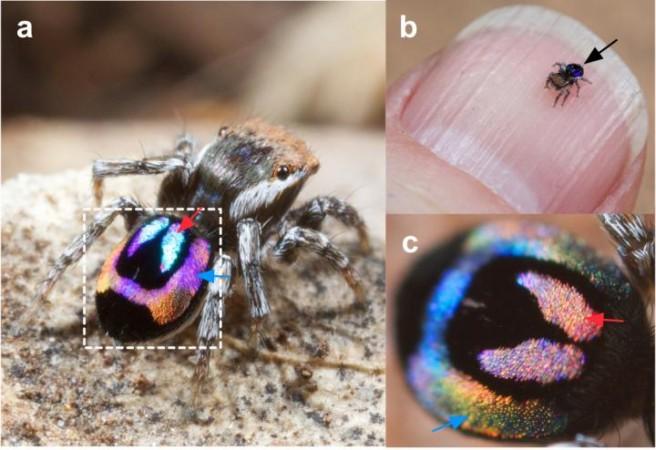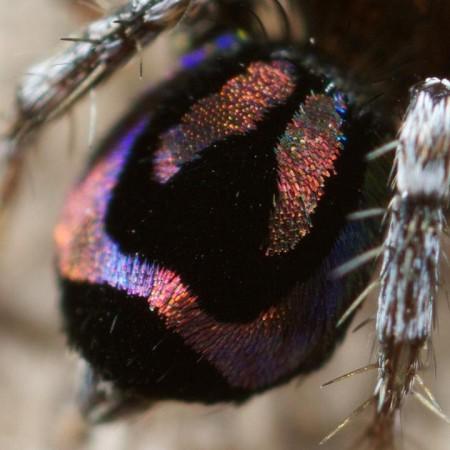
Australian peacock spiders are known for their colourful courtship displays featuring diverse body colouration, patterns and movements. But, a special species of this tiny arachnid takes this unique trait to the next level by creating what scientists claim as nature's smallest rainbow.
The species, called the rainbow peacock spider (Maratus robinsoni), showcases an intense rainbow-like iridescent signal in males' courtship displays to the females. According to the scientists, this is the first known instance in nature when males use an entire rainbow of colours to attract females to mate.
To unearth the secret of how do male peacock spiders produce their rainbows, an international team of researchers examined the spider's photonic structures by various techniques like light and electron microscopy and optical modelling to generate hypotheses about the spider creates such intense rainbows.
After testing and validating their hypotheses by using advanced nano 3D printing to produce different prototypes, the researchers found that the miniature rainbows actually emerge from particular abdominal scales on the spiders. The research was led by Bor-Kai Hsiung, a postdoctoral scholar at Scripps Institution of Oceanography at the University of California San Diego.

These scale "have 2D nanogratings on microscale 3D convex surfaces with at least twice the resolving power of a conventional 2D diffraction grating of the same period," the researchers said in a study, recently published in the journal Nature Communications, adding that the design principle of the peacock spiders' scales could inspire new optical technology.
Researchers said that the super iridescent spider scales can be used to overcome current limitations in spectral manipulation. They can also help reduce the size of optical spectrometers, especially in instruments on space missions, or wearable chemical detection systems.
"As an engineer, what I found fascinating about these spider structural colours is how these long evolved complex structures can still outperform human engineering," Radwanul Hasan Siddique, a postdoctoral scholar at California Institute of Technology and the co-author of the study, said in a statement.
"Even with high-end fabrication techniques, we could not replicate the exact structures. I wonder how the spiders assemble these fancy structural patterns in the first place!" Siddique added.















